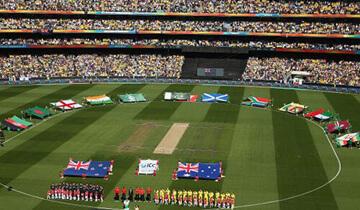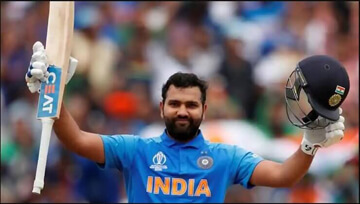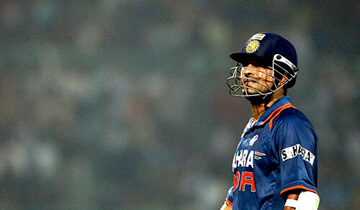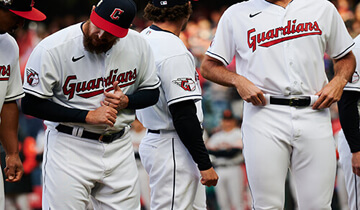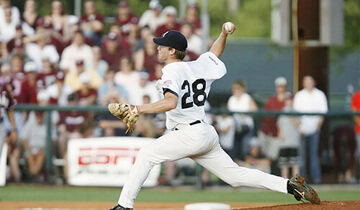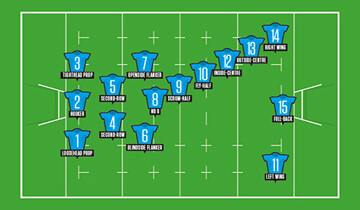A red card in soccer is used to indicate that a player is being ejected from the current game. When a player receives a red card, they must leave the field immediately and cannot be replaced by a substitute player. Their team must continue playing with one less player on the field.
Getting a red card is considered a serious punishment in soccer. It is given by the referee when a player commits a serious foul, receives two yellow card warnings, displays violent conduct, spits at an opponent, denies an obvious goal-scoring opportunity through handball, or uses offensive, insulting, or abusive language or gestures.
The consequences of a red card extend beyond the current game. A player who gets a red card is automatically suspended from playing in their team’s next match. Receiving multiple red cards over a season can result in longer suspensions. This makes a red card something players work very hard to avoid.
When a Red Card is Given
Main Offenses Resulting in a Red Card
In association football, the referee has the authority to show a player a red card to send them off the field of play and disqualify them from the remainder of the match. The main offenses that warrant a red card are:
- Serious foul play - A tackle or challenge that endangers the safety of an opponent. This could include excessive force, brutality, or violence.
- Violent conduct - Any action not related to regular gameplay that is violent or aggressive, such as punching, kicking, headbutting or elbowing another player.
- Spitting at an opponent or any other person.
- Deliberately handling the ball to deny the opposing team a goal or obvious goal-scoring opportunity. This does not apply to a goalkeeper within their own penalty area.
- Deliberately committing a foul to deny a goal or obvious goal-scoring opportunity. The last defender pulling an attacker down would be an example.
- Using offensive, insulting or abusive language and/or gestures.
- Receiving a second yellow card in the same match, resulting in a red card.
Straight Red or Second Yellow
A red card can be awarded directly for a serious offense, this is known as a straight red card. However, a player can also receive a red card by getting two yellow card offenses in the same game. Two yellow cards equate to an indirect red card. Once a player has a red card of either form, they must leave the field immediately and take no further part in the match. Their team must then play a player short for the remainder of the game.
Consequences of a Red Card
Player must leave field immediately and can’t return
A player who receives a red card is ejected from the match immediately and cannot return to the field of play. As soon as the referee shows the red card, the player must leave the field right away, even if they disagree with the decision. They cannot remain on the sidelines or bench area and must go directly to the locker room. Refusing to leave the field or returning to play after a red card can result in additional suspensions and fines.
The team must continue playing with one fewer player on the field after a red card is issued. They are not allowed to substitute a new player on to replace the ejected player. This puts the team at a significant disadvantage numerically for the remainder of the match. Playing short-handed makes it harder to defend and move the ball upfield. The red-carded player cannot be replaced until the match is over.
Team must play with one less player
When a player is issued a red card and ejected, their team must continue playing with only 10 players on the field (or 9 players if the goalkeeper is sent off). The team is not allowed to bring on a substitute to replace the red-carded player. So being forced to play short-handed puts them at an immediate disadvantage.
Tactically, losing a player affects how a team can setup their formation and positions. The coach may have to adjust to fill the gap left by the ejected player, which can disrupt the initial game plan. Each player may have to work harder and cover more ground to compensate. The team will also have fewer offensive weapons and numbers to defend against opponents’ attacks.
The numerical imbalance makes it challenging to possess the ball, move it upfield efficiently, and create scoring chances. With fewer passing options, it allows the opposing team’s defense to press higher and win back possession more easily. The team is also vulnerable to giving up goals since they have fewer players to cover spaces and mark opponents in their defensive third. Overall, being short-handed significantly reduces a team’s chances of getting a favorable result.
Player will be suspended for at least next game, often more
A red card results in a mandatory one-game suspension for the offending player. This means they will automatically be banned from playing in their team’s next match in that competition.
The suspension frequently extends beyond just the next game though. Most professional leagues and national federations have disciplinary committees that review red card incidents and hand down longer suspensions depending on the severity of the offense. Any violent conduct, dangerous play, or unsporting behavior often warrants multiple-game bans.
For example, FIFA guidelines state that serious foul play can result in suspensions of up to 3 games, attacking an opponent can be up to 6 games, and headbutting or punching can lead to bans of up to 10 matches or more. The disciplinary panel takes into account things like intention, force, location on the body, potential for injury, etc. when deciding suspension lengths.
So while every red card earns an automatic one-match ban, players can expect to sit out additional games if the foul is deemed serious enough by league officials. This ensures they serve adequate punishment that deters future misconduct.
Length of suspension depends on offense (1 game for second yellow, more for straight red)
The length of suspension after a red card depends on the nature of the offense committed. A red earned for two yellow card offenses results in a one-game ban. But a straight red for a serious foul or violent conduct typically brings harsher punishments.
A second yellow card leading to a red is fairly straightforward - that earns the minimum one-game suspension. These are for less egregious offenses like persistent infringement, dissent, or delaying restart of play. But serious foul play like dangerous tackles, violent conduct, spitting, or denying an obvious goal chance results in longer bans.
Straight red offenses are reviewed by the league’s governing body. Bans for violent conduct often start at 3 games. Punching or headbutting gets suspensions of around 5 games. Very dangerous tackles or headbutts can result in bans of 8+ matches. Even offenses like abusive language can get 3-6 game suspensions.
So while a second yellow results in an automatic one-game suspension, straight reds require disciplinary hearings to determine appropriate bans based on the seriousness of the incident. This process ensures punishments act as an effective deterrent against dangerous and unsporting behavior on the pitch.
If goalkeeper, team must replace with substitute goalkeeper or field player
If a goalkeeper is issued a red card and ejected from the match, their team faces an additional challenge. Not only must they play with fewer players, but they also must replace the keeper properly or face further punishment.
The normal protocol is to substitute the reserve goalkeeper if one is available on the bench. This allows the team to maintain the goalkeeper position and not divert an additional field player. If no sub keeper is available, then an available field player must swap their jersey for that of the keeper and fill the role in goal.
A team cannot opt to simply play without a goalkeeper. That would lead to an abandoned match forfeit. And an outfield player cannot switch to keeper while still wearing an outfield jersey number and equipment. Doing so would be sanctionable.
So teams must strategically plan their matchday squads to have a substitute goalkeeper ready when feasible. But being forced to put an outfield player in goal can further hurt a team’s chances after losing a player to a red card ejection. The makeshift keeper unlikely has the appropriate training and skills needed for the position.
History of the Red Card
Introduced at 1970 World Cup after call for clearer system
The red card was introduced at the 1970 FIFA World Cup in Mexico as part of a new system to clarify disciplinary decisions in football matches. Prior to 1970, referees used either a yellow card or no card at all, which led to confusion over the severity of the foul committed.
There were calls for a clearer system after some controversial incidents at the 1966 World Cup in England. Referees were inconsistent in their use of cautions and sending-off players. The red card was brought in so referees could distinctly indicate when a player was being expelled from the game.
The new system debuted at the 1970 World Cup. A yellow card was used to caution players, while a red card meant the player was being sent off and expelled from the remainder of the match. Red and yellow cards continue to be used today as the universal system in football.
Inspired by traffic light system to indicate severity
The colored card system was inspired by the traffic light color system used on roads. Red, yellow, and green lights universally indicate increasing levels of severity, priority, or warning.
Introducing colored cards in football allowed referees to use a simple visual system that players and fans could instantly understand. A yellow card serves as an initial warning, while a red card clearly indicates the most severe punishment of sending off.
The traffic light color system was first developed in the United Kingdom and was internationally widespread by the 1960s. This made it an obvious model for implementing a clearer disciplinary system in football. Flashing colored cards gave referees a straightforward way to communicate with players and spectators in the stadium.
First used in English league in 1976
After being pioneered at the 1970 World Cup, the colored card system was gradually adopted by leagues and competitions around the world. It took several years to become the global standard.
The English Football League was the first domestic competition to implement red and yellow cards during matches. At the start of the 1976-77 season, the Football League decided to adopt the colored card system.
There was initially some reluctance from referees in England to use red cards. The first red card was not issued until October 1976, two months into the season. Over time, English referees grew accustomed to brandishing colored cards as a key part of enforcing discipline.
The colored card system is now used worldwide at all levels of competitive football. It took time to spread after the 1970 World Cup but is now universally recognized. The cards have become symbolic of the rules and ethics of the sport.
Interesting Facts and Records About Red Cards in Soccer
Shortest Time Shown
The fastest red card in history was given to goalkeeper Lee Todd in 2000 while playing for Cross Keys Rugby. The referee showed him a red card just 2 seconds into the match against Tumble United.
Most in One Game
The record for most red cards in a single game is 36. This occurred in a 1999 amateur match in the Brazilian state of Maranhão between América and Sampaio Corrêa Football Clubs. The referee lost control early on as tensions mounted and handed out 36 reds by the final whistle.
Players with Most Career Reds
The player with the most career red cards is Gerardo Bedoya from Colombia. During his professional career spanning from 1991-2009, he accumulated 46 red cards playing for various clubs and the Colombian national team. That’s more reds than even the notoriously aggressive players like Sergio Ramos or Pepe.
Role of the Referee
Importance of referees being clear when giving cards, not overusing cards
The role of the referee in a football match is crucial for ensuring fair play and enforcing the rules of the game. One of the key responsibilities of the referee is showing cards to players when necessary, such as for dangerous fouls or unsporting behavior. However, it is important for referees to be clear and consistent when giving cards and not overuse them.
Overusing cards can disrupt the flow of the game and cause frustration for players and fans. Referees should consider the context and severity of the foul or infringement when deciding whether to give a yellow or red card. Minor fouls do not always warrant a caution. Referees should only give cards when truly necessary and be able to clearly explain their decision to the players. This maintains their authority and earns respect.
It is also vital that referees use clear hand signals and verbally announce when they are giving a card. This ensures there is no confusion and all players and officials understand the decision. Referees should make eye contact with the player, hold the card up visibly and state “Yellow card!” or “Red card!” The player’s number should also be noted in case further disciplinary action is required after the match. Taking the time to clearly communicate card decisions demonstrates the referee’s confidence and command of the game.
Communication with other officials
Good communication between the referee and other match officials is essential for making correct decisions. The referee is assisted by two linesmen who watch for infringements along the touchlines and indicate when the ball has gone out of play. It is important for the referee to make eye contact with the linesmen and get their perspective before making decisions, especially regarding offside calls. If the linesman has a better view of an incident, the referee should take their advice into account.
The referee and linesmen should also coordinate set plays such as corner kicks, goalkicks and throw ins. The referee indicates when the play should restart while the linesman keeps track of when the ball is properly put into play. Other officials like the fourth official and VAR assistant also provide input to the referee when needed regarding substitutions, injuries, or video review.
Maintaining constant communication through eye contact, hand signals and radios allows the team of officials to work together seamlessly. This helps ensure all angles are covered on the pitch and decisions are made both accurately and efficiently. The referee is still ultimately responsible for final decisions and should project confidence in their calls. However, by respecting input from other officials, they can avoid making easily correctable mistakes. Good teamwork with assistants is essential for referees to direct smooth, fair matches.
Conclusion
In conclusion, the red card is a powerful disciplinary tool in soccer that carries significant weight and consequences. The flashing of the vivid red card by the referee instantly communicates that a player is being expelled from the match for a serious infraction of the rules. This brings individual shame but, more importantly, puts their team at a great disadvantage by forcing them to play shorthanded against their opponent. The universal adoption of the red card system has helped curb excessive violence and misconduct in matches by serving as a strong deterrent. However, referees must be judicious in distributing red cards and should rely on the assistance of linesmen to ensure correct decisions are being made. Ultimately, the threat of earning a red card hangs over every player as a reminder to compete with respect and integrity. While infuriating in the moment, most players recognize that the orderly nature of the beautiful game hinges on the consistent enforcement of its rules and codes of conduct.


































